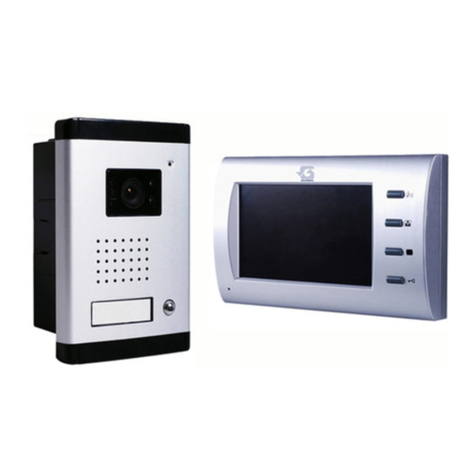
P.5of14
Select the other channel if any disturbance occurred.
LED indicator from handset: (see fig. 1)
a) When the low battery status from door station, the LED would blink in red & green.
b) When the low battery status from handset, the LED would be on in red.
c) The LED would be in green when battery is charged up.
LED indicator from the door station (see fig.2: point 4)
zLow battery indicator: green light indicates the batteries are in operating level, red light
indicates low battery. Red light would only turn back to green after changing of new
batteries .
zPress the call button from the door station once to activate the setting again after change
of batteries.
zIf the LED turns red & green blinking, it means the successful of code setting between
handset and door station.
Installation Precaution:
Please change to use another frequency if the conversation or images suffer interference from
the surroundings.
When in test model, there will be no door open function
Quality of the images and sound for wireless system will vary according to environmental
conditions, which will also affect the transmission and receiving range. For the best quality,
these functions should be tested before actual installation.
To obtain the best signal transmission, install the indoor unit and door station vertically
on the wall and they should be on the same height from the ground. ( See Fig.6 )
If the signal transmission is weak when using “ table top “ for the indoor unit, install the
indoor unit on the wall vertically to obtain better performance.




























